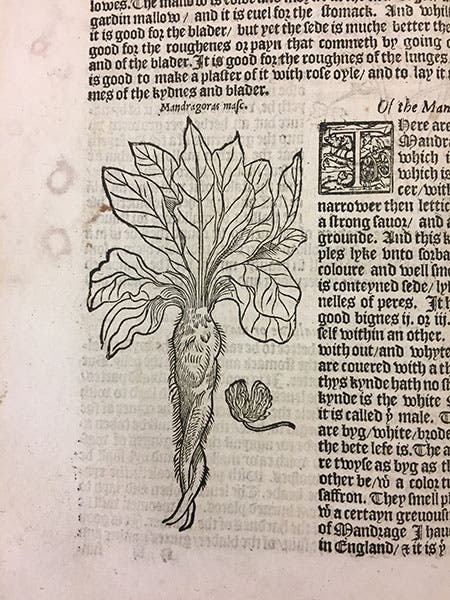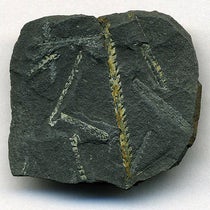Scientist of the Day - William Turner
William Turner, an English cleric and naturalist, died July 13, 1568, at the approximate age of 60; his actual date of birth is unknown. In 1568, the first complete edition of Turner’s Herbal was published, with a title that is long but instructive: The first and seconde partes of the herbal ... lately oversene, corrected and enlarged with the thirde parte : lately gathered, and nowe set oute with the names of the herbes, in Greke Latin, English, Duche, Frenche, and in the apothecaries and herbaries Latin, with the properties, degrees, and naturall places of the same. No one in England before Turner had attempted to provide Greek and Latin names for English plants, and to give accurate, first-hand descriptions of so many of them, and also offer the medical virtues. Because of this, Turner is invariably described as the father of English botany, and we would not quarrel with that label.
Actually, he published his herbal in three parts, in 1551, 1562, and 1568, but the first two printings barely survive, because of the other hat Turner that wore, that of Anglican divine. He was an ardent church reformer and wanted to go much further than his Anglican colleagues, totally rejecting the wearing of vestments by the clergy, for example. Because of his radical stance, he was twice forced into exile, once under Henry VIII, and then when the Catholic Queen Mary Tudor came to the throne. During Mary’s reign, all copies of Turner’s books were confiscated and destroyed. Fortunately, the last edition of his Herbal included all three parts, and that is the edition that we have in our History of Science Collection.
Since Turner’s herbal was written in English, it can be read by all of us, and there is a refreshing no-nonsense tone to Turner’s prose. For example, when describing the mandrake (second image), Turner was especially scornful of the folklore surrounding these roots that supposedly have human form. He declared that he had never seen one with a human shape, and that those sold in the market that looked like humans were manufactured by scoundrels to dupe a gullible public. He would thus not have approved of the mandrake scene from the Harry Potter film, Chamber of Secrets (2002), which you can see here on video.
The 1568 edition of Turner’s Herbal was published, not in London, but in Cologne. Supposedly Turner wanted his herbal illustrated with copies of the woodcuts that appeared in the octavo edition of Leonhart Fuchs De historia stirpium (1545), which were available there. Since we have that edition of Fuchs’ herbal in the Library, I though it might be interesting to compare some of the woodcuts in the two works: you can link here to Turner’s walnut tree and Fuchs’ walnut tree, to Turner’s chestnut and Fuchs’ chestnut, and to Fuchs’ chamomile, to compare with that of Turner’s above (or here is a detail of Turner’s chamomile). I would say that the question of where Turner got his illustrations can be pretty much laid to rest.
I chose the walnut and chestnut to compare, because some years back we published a post on another herbal author, Hieronymus Bock. Bock’s herbal illustrations were also based on those of Fuchs, but Bock had much more fun with them, adding hedgehogs and bird traps to enliven his images, as you can see if you follow the link. I suspect that Turner lacked Bock’s playful sense of humor. But we forgive him, for he took his English plants quite seriously, to the benefit of all the botanists who followed him.
Dr. William B. Ashworth, Jr., Consultant for the History of Science, Linda Hall Library and Associate Professor emeritus, Department of History, University of Missouri-Kansas City. Comments or corrections are welcome; please direct to ashworthw@umkc.edu.







